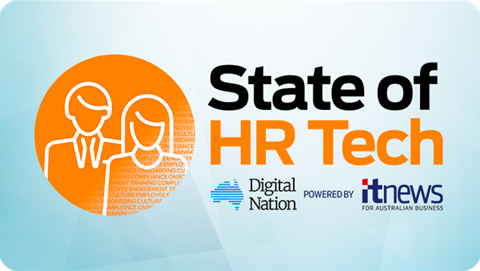The Royal Flying Doctor Service (RFDS) is enhancing its patient data as it introduces large dashboards so real lifetime care activity can be better viewed.
The not-for-profit aeromedical organisation needed to upgrade its electronic health record with Ryan Klose, CIO at the RFDS, explaining to Digital Nation how the organisation took the strength of its user experience technologies to build out its technology assembly.
“The electronic health record for our aeromedical environment was driven from the fact that we needed to improve the patient episode of care through better real-time collaborating of our clinicians in the air, on the ground at the receiving hospital and in the operational control centres,” Klose said.
“Previously to the EHR [electronic health record], much of that was done on paper or by telephone calls.
“You can just imagine the administration to keep all information up to date and timely would weigh down on our clinicians, but at the same time for the patient.
“Having all this information in real-time starts to improve the patient outcomes that we get going through.
He said another area for the electronic health record also enabled the team to develop digital health in outback Australia.
This is especially important as remote parts of Australia often lack internet access with Klose stating even satellite capabilities still “patchy”.
“We needed to have solutions built digitally that can work offline and online and have that working seamlessly for the clinician.
“Our clinicians aren't technology experts by any means, but they need to be able to use technology that just works for them,” Klose said.
Klose said the solution had to go beyond a standard off-the-shelf product after initially searching the market for several years.
“Our journey was never just to solve the digital healthcare challenge at that time or today. It was to continue to solve the digital healthcare challenge in two years, five years and seven years.
“Sometimes taking a product off the shelf isn't always the most wise move at that time unless you pick a progressive product,” Klose said.
He explained the organisation built the electronic health record on the Oracle system, “but I probably better describe that what we did, is we effectively did technology assembly.”
“We took the strength of what Oracle was providing. We took the strength of some of the user experience technologies that we did and we started to build parts of that and then we assembled the technology.”
Inspired by Oracle's Red Bull Racing, Klose said the RFDS saw it as “having that extra pair of digital hands.”
He said it wasn’t about “replacing our clinicians” but “just to have an extra pair of hands” would make such a difference for the patient and also for that clinician trying to manage the conditions of the outback.
Klose said the solution has been live since January of last year and has pushed through over 15, 000 patients through the system electronically.
Ultimately, the platform will be scaled out to a national level with work predominantly already completed in New South Wales.
Results seen include the removal of paper processes and faster data access.
“We've seen paper been eliminated, we've seen immediate information as it's entered in the air, we are seeing that data on the ground straight away.
“The handover documentation is so much quicker because it's already entered and completed through there.
“Tasking information that happens in our operation control centres helps prioritise the needs of patients in the field as we've got planes connecting every six minutes out there to respond across Australia.
“Thanks to real-time digital information being collected, I think the healthcare industry is learning
what real-time data can do across the entire supply chain.”
Klose said since the technology has been implemented feedback has been largely positive since the solution was designed to be intuitive.
“The first bit of feedback we got was they found that the system was intuitive to use compared to what they've seen. In other hospitals, which we didn't have the opportunity to see some of those, the way we built the system is that it should be as easy as if you're doing online shopping …. it's got to be intuitive.”
Klose said the “only issue we did have when we went live was security.”
“We locked it down too much. People in the air weren't able to log in.”
A fix was easily found with the RFDS rearranging “some of the offline stuff with security to deal with that lot better.”
The next move for the organisation will be to enhance its data.
“We are introducing large dashboards across all our bases so people can see real lifetime care activity in the logistics.
“The other area as well is to ingest more of the information around us. We understand that if you're in Outback Australia or you're being picked up on a plane and someone's blood pressure and pulse rates dip very quickly, that's recorded.”
AI work in flight
Over the coming months, Klose said the organisation is “exploring areas of AI”.
“We're not using AI to replace any condition or have AI go crazy out there, but AI is going to elevate that data to another level and see it as like a second clinician in the room.”
“It's like that digital clinician. Digital outback for us will continue to expand beyond aviation and our aeromedical side. We're going to bring it into communities, we're going to be using digital to create, non-clinician in-person moments.
“This is the area where RFDS is moving to next to elevate that equitable healthcare for anyone who lives remote or regional in Australia to make that a little bit easier.”


.png&h=140&w=231&c=1&s=0)

_(20).jpg&h=140&w=231&c=1&s=0)




_(26).jpg&w=100&c=1&s=0)

 iTnews Executive Retreat - Security Leaders Edition
iTnews Executive Retreat - Security Leaders Edition












_(1).jpg&h=140&w=231&c=1&s=0)



